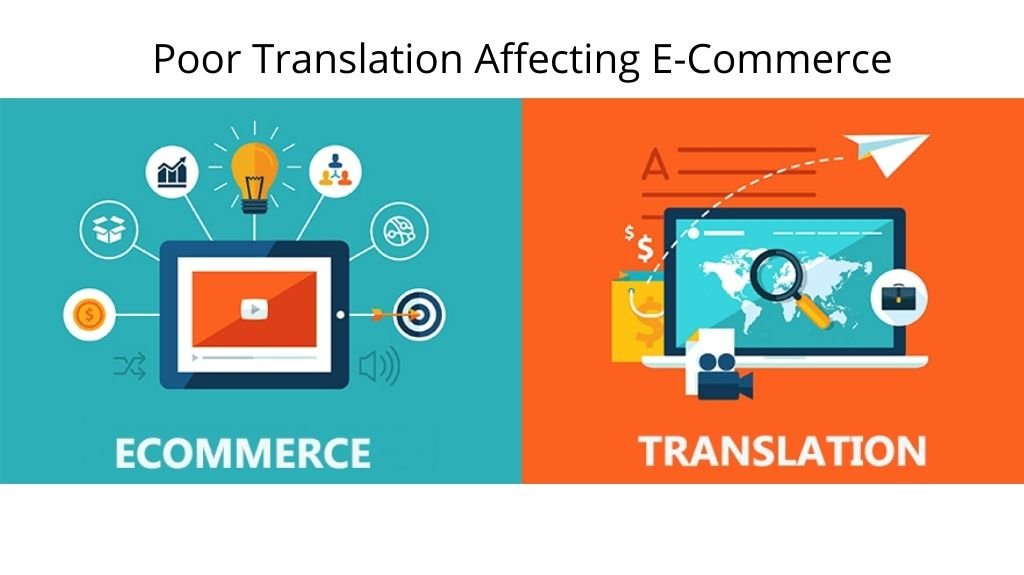Poor translation affecting e-commerce is a big concern that we all should be aware of. The e-commerce market is only going to become bigger. Despite the fact that conventional retail will always have a role. Amazon’s degree of ease has rewritten the rules of the game and there is no way to reverse it. Online retail competition is fierce across the world, with many shops vying to outperform their rivals and maximize earnings.
It’s a huge challenge to compete at this level. They must always be on the lookout for dangers to their operations. Expansion into new markets is an important part of the e-commerce business. And it’s quite simple because it requires no local premises. However, this may lead to an important but often missed mistake: utilizing poorly-translated material. The inadequate translation may negatively impact e-commerce. And we’ll discuss four ways in this article. Starting now:
Four Ways In Which Bad Translation Affects The E-Commerce
It impairs the usability of the UI.
E-fundamental commerce’s components have been refined to a high degree mechanically at this stage. In terms of appearance, functionality, and response time, everyone is aware of the ideal retail website. With the usage of an easy template-driven retail CMS, you don’t have an excuse for not achieving high quality. As a result, you may believe that the user interface (UI) is unimportant, but it will result in your mistake.
You can have all the appropriate components in place. But if they’re wrongly labelled, customers will be unsure of what they’re getting. If your navigation is poorly translated, it may be difficult for users to distinguish between the various parts. This can lead to dissatisfaction or even rage, which can have a negative impact on their interest in your product.
Offers and descriptions Distortion
Even though pricing can be readily converted to other currencies, it is much easier to make a mistake when translating more complicated material, such as offers and product descriptions. A “Buy one get one free” promotion is a good example of how this message might be phrased. If a potential customer doesn’t grasp an offer. Then they won’t be enticed to make a purchase. It is also an example of poor translation affecting e-commerce.
Descriptions are critical to conveying what a product entails and why it is so fascinating.. A badly translated product description might leave the reader bewildered about what they would receive if they were to purchase it if the images do not make things clear. Tech items are particularly vulnerable to this.
You Can Also Read: Most Effective Translation techniques to follow in 2022
It messes up the layout of the page.
The way a web page looks is important, but in the world of e-commerce, when so much is at stake, it is even more so. We may style texts to fit certain visual components like backdrop containers or panels, as well as dispensed in specified amounts to provide a clean look.
We may overlook these formatting criteria if someone translates the text through a shoddy translation process. Even though the information is grammatically correct, it may not appear well on the page’s design. As a rule, translations for e-commerce should be both semantically and structurally sound.
It tarnishes the reputation of brands.
While the difficulties we’ve discussed so far are legitimate concerns, the damage they do to your brand’s reputation is considerably more serious. If you want to appear professional, you must project an aura of professionalism, showing prospective consumers that you do business in the proper manner and care about reaching high standards.
Social media mentions of a poorly-translated product may diminish the favourable impressions that customers have of your business, making it more difficult to attract new customers. In the event that other companies (potential partners) find out about it, they may begin to doubt the rationality of collaborating with you. If you’re ready to compromise on the quality of your material, how can someone trust you to do anything else correctly?
Final Words
The quality of eCommerce copy translation is incredibly important and we should regard it seriously, even though it sounds minor to some merchants (especially those who have not yet attempted international selling).
The translation quality you receive through Google Translate isn’t good enough when you’re moving into a new region and trying to reach people who speak a different language. You’ll get better results if you make the investment in a reputable translation service.
FAQ (Frequently Asked Questions)
We can improve our translation by keeping the sentence short and to the point. We should always prefer active voice during our writing. You can read 12 Tips to Writing for Translation for more information.
Yes, of course. We all are working for the ease of our customers. If our customers don’t understand our site because of the poor translation, then it will be harmful to our e-commerce.
A good translation can help us improve our customer base. It will be easy for them to trust us when they will find our site user-friendly with great translation.
Yes. It is so much important. We must choose the language for the e-commerce site by thinking about our customer base and target audience.
Yes. When a customer will visit the site and find the site not suitable for them, they will instantly leave the site. This will result in a higher bounce rate for the site. It will create a bad impression and the conversion rate will also go down due to poor translation.


